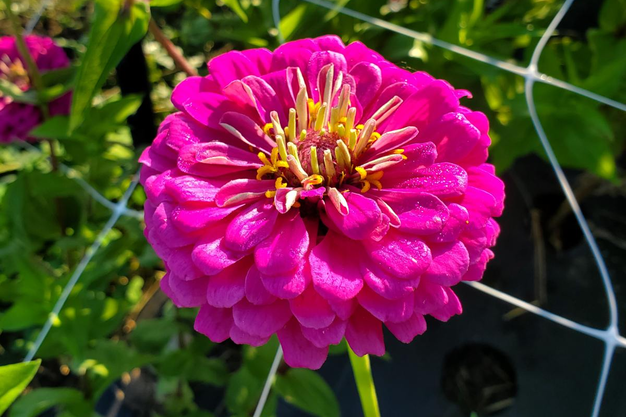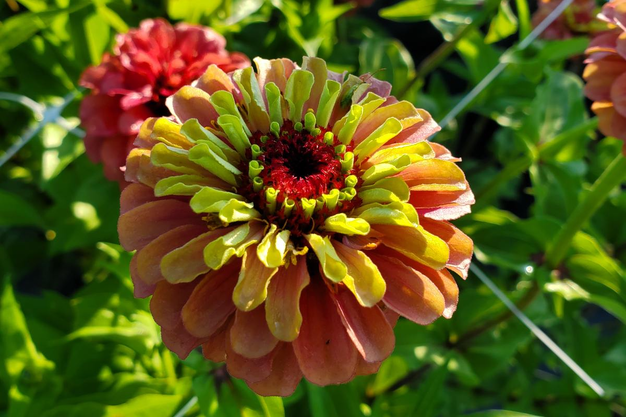South Dakota State University Extension has announced the results of its zinnia variety trials in eastern South Dakota.
Kristine Lang, assistant professor and SDSU Extension Consumer Horticulture Specialist, managed the research trials. Over two years, Lang and her team monitored the growth and quality of four popular zinnia varieties: Zinderella Peach, Oklahoma Ivory, Queen Red Lime and Benary's Giant Purple.
Lang said there is limited data on how popular cut flower varieties fair in the Midwest, and specialty producers in South Dakota are eager for local data.
"A lot of cut flower breeding happens on the coasts or outside of the Midwest, so it's helpful to see how flowers perform in our windy, humid environment that has a long day length in the summer," Lang said. "I'd love to hear from farmers about whether these findings align with what they've seen."

The study recorded bloom diameter, number of stems, length of stems, length of growing season, insect damage, and how straight or curved flower stems were for each variety. The complete results were published in the HortTechnology journal in Volume 34, Issue 5.
During the trials, Oklahoma Ivory produced the most marketable stems, or flowers, but had some of the smallest blooms. Benary's Giant Purple, on the other hand, produced the fewest stems but had the largest blooms.
Queen Red Lime produced the second-largest number of flowers, with the longest stems. Zinderella Peach showed the most insect damage, but also offered unique, curved stems.
Lang said which variety performed "best" depends on what producers want. She said Benary's Giant Purple is a good candidate for Midwestern flower farmers who want long stems and large, defect-free blooms that can stand up against insects.
Queen Red Lime is a good option for farmers who want straight, sturdy stems and a medium-sized bloom. And for farmers who want the most stems with smaller blooms, there is Oklahoma Ivory. Farmers who are looking for a unique variety of zinnia and like curved stems might like Zinderella Peach.
 Queen Red Lime
Queen Red Lime
Ellie Fitzpatrick, a Brookings native, was the lead undergraduate research assistant on the project and co-authored the published article. She graduated in the spring of 2024 with majors in agronomy and horticulture and minors in soil health management, crop protection, and Spanish. As her honor's student research project, the work with cut flowers taught her about every step of a research project, from idea to execution.
"I'm so glad that I had the opportunity to work on this project, and I know this research experience will set a strong foundation for me in graduate school," she said.
Alexis Barnes and Hannah Voye also assisted with the trials.
To see the complete article and research results, visit the SDSU Extension Horticulture Research page or https://doi.org/10.21273/HORTTECH05452-24.
Source: South Dakota State University
